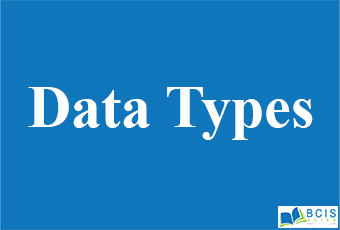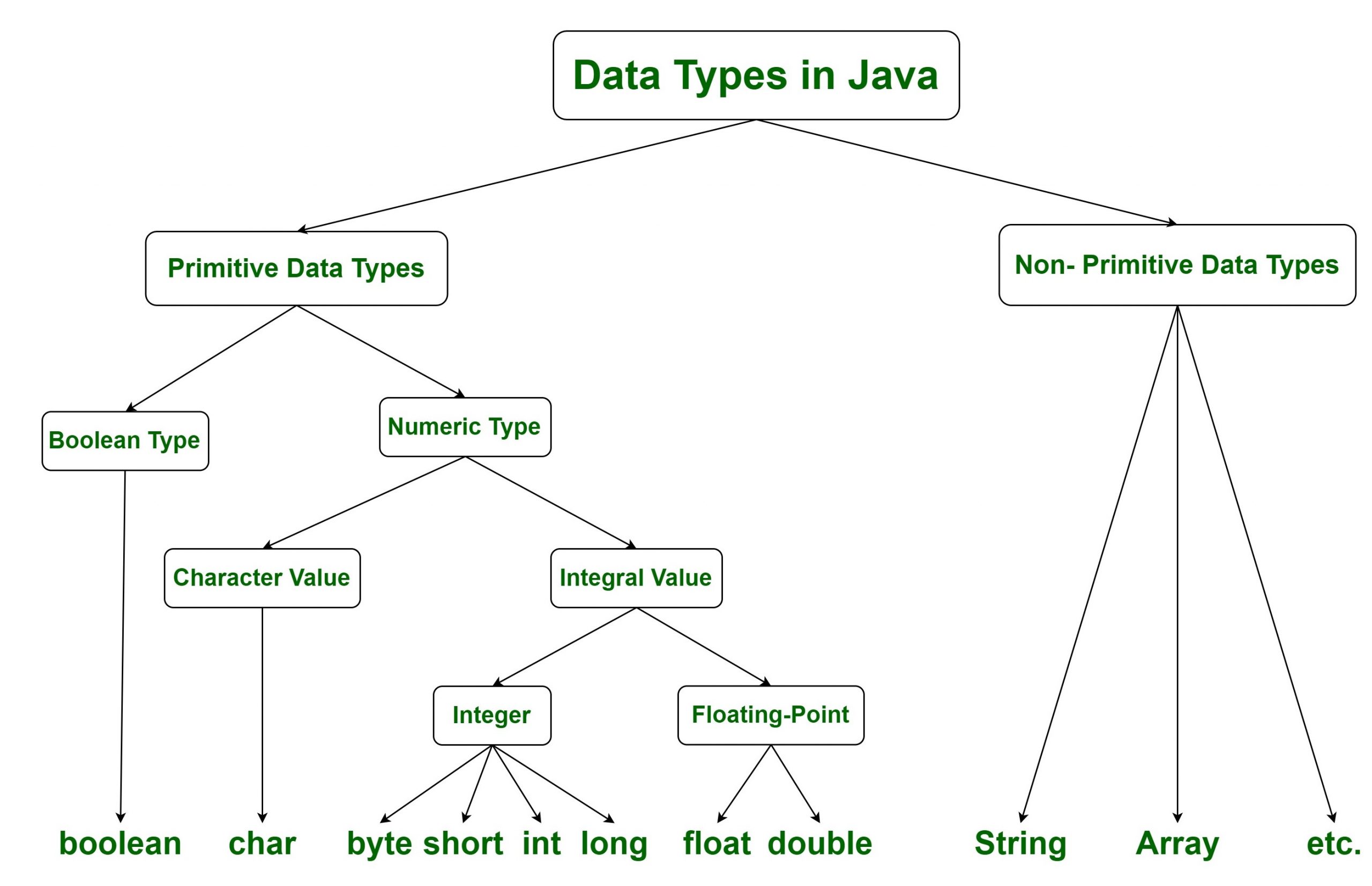
DATA TYPES:
Data types specify the different sizes and values that can be stored in the variable.
Data types are divided into two groups:
- Primitive data types – includes byte, short, int, long, float, double, boolean and char
- Non-primitive data types – such as String, Arrays, and Classes

fig: data-type
Primitive Data Types:
The Java programming language is statically-typed, which means that all variables must first be declared before they can be used. This involves stating the variable’s type and name, as you’ve already seen:
int gear = 1;
Doing so tells your program that a field named “gear” exists, holds numerical data, and has an initial value of “1”. A variable’s data type determines the values it may contain, plus the operations that may be performed on it. In addition to int, the Java programming language supports seven other primitive data types. A primitive type is predefined by the language and is named by a reserved keyword. Primitive values do not share state with other primitive values. The eight primitive data types supported by the Java programming language are:
byte: The byte data type is an 8-bit signed two’s complement integer. It has a minimum value of -128 and a maximum value of 127 (inclusive). The byte data type can be useful for saving memory in large arrays, where the memory savings actually matters. They can also be used in place of int where their limits help to clarify your code; the fact that a variable’s range is limited can serve as a form of documentation.
short: The short data type is a 16-bit signed two’s complement integer. It has a minimum value of -32,768 and a maximum value of 32,767 (inclusive). As with byte, the same guidelines apply: you can use a short to save memory in large arrays, in situations where the memory savings actually matters.
int: By default, the int data type is a 32-bit signed two’s complement integer, which has a minimum value of -231 and a maximum value of 231-1. In Java SE 8 and later, you can use the int data type to represent an unsigned 32-bit integer, which has a minimum value of 0 and a maximum value of 232-1. Use the Integer class to use int data type as an unsigned integer. See the section The Number Classes for more information. Static methods like comparing Unsigned, divide Unsigned, etc have been added to the Integer class to support the arithmetic operations for unsigned integers.
long: The long data type is a 64-bit two’s complement integer. The signed long has a minimum value of -263 and a maximum value of 263-1. In Java SE 8 and later, you can use the long data type to represent an unsigned 64-bit long, which has a minimum value of 0 and a maximum value of 264-1. Use this data type when you need a range of values wider than those provided by int. The Long class also contains methods like comparing Unsigned, divide Unsigned, etc to support arithmetic operations for unsigned long.
float: The float data type is a single-precision 32-bit IEEE 754 floating-point. Its range of values is beyond the scope of this discussion but is specified in the Floating-Point Types, Formats, and Values section of the Java Language Specification. As with the recommendations for byte and short, use a float (instead of double) if you need to save memory in large arrays of floating-point numbers. This data type should never be used for precise values, such as currency. For that, you will need to use the java.math.BigDecimal class instead. Numbers and Strings cover BigDecimal and other useful classes provided by the Java platform.
double: The double data type is a double-precision 64-bit IEEE 754 floating-point. Its range of values is beyond the scope of this discussion but is specified in the Floating-Point Types, Formats, and Values section of the Java Language Specification. For decimal values, this data type is generally the default choice. As mentioned above, this data type should never be used for precise values, such as currency.
boolean: The boolean data type has only two possible values: true and false. Use this data type for simple flags that track true/false conditions. This data type represents one bit of information, but its “size” isn’t something that’s precisely defined.
char: The char data type is a single 16-bit Unicode character. It has a minimum value of ‘\u0000’ (or 0) and a maximum value of ‘\uffff’ (or 65,535 inclusive).
You may also like the keywords.

This site is going to be a huge help for the students all over Nepal…. Great work guys… Keep it up….